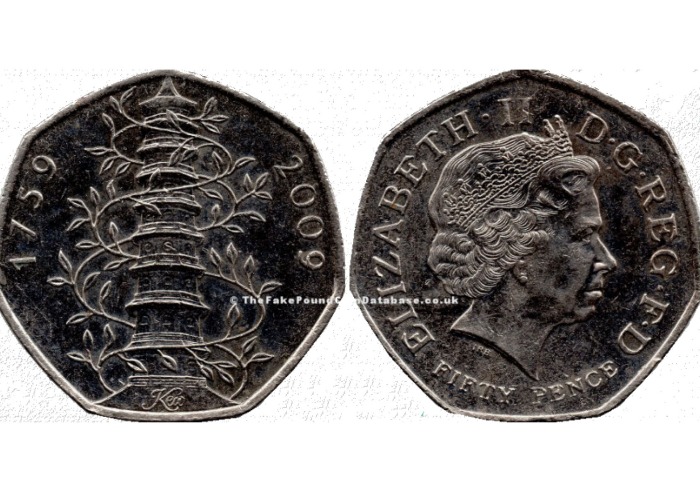Valuable 50p coins: how to spot a fake Kew Gardens coin

The rare Kew Gardens 50p coin is hugely popular, and consequently, there are many fakes in circulation. Here’s how to tell whether you have the real deal.
The Kew Gardens 50p is one of the best-known rare coins around.
With a sale of a Kew Gardens 50p for £91 on eBay in May (read here for why sales rather than listings are important), it’s no wonder collectors love this coin.
Plus, because it was only produced in 2009, it’s possible that you have one in your wallet.
Unfortunately, although 210,000 of these coins were originally issued, there’s a large number of fakes out there in circulation.
We’ve teamed up with the Fake Pound Coin Database to tell the fakes from the real deal.
If you think you’ve got another rare 50p coin or a rare £1 coin, click on the links to find out more.
The real deal
Firstly, (re)acquaint yourself with what a genuine Kew Gardens coin looks like:

The fakes
Spotting a fake is tricky because there’s a wide variety of them.
Below are just a few of the examples listed by the Fake Pound Coin Database, with notes below on why they’re fakes.

The frosted portrait and design is a giveaway that this is a fake – however, there are also design elements in the pagoda and Queen’s head (explained below).

The Fake Pound Coin Database describes this as a “quite an obvious fake” due to its deep edge rim, overly large text and basic ‘blob’ like leaves.

The slightly gold colour of this coin reveals it to be a fake.
Spotting a fake: the pagoda
Fakes contain a number of giveaways when you look at the design of the pagoda on the tails side.
At the top of the pagoda, an overly pointy roof can be a sign of a fake – refer back to the genuine Kew Gardens 50p above to compare.
At the base of the pagoda, there shouldn’t usually be any lines around the word ‘Kew’ - although a few real coins still carry these lines.

Spotting a fake: the Queen
Start with the Queen’s neckline.
A genuine Kew Gardens 50p has the right base of the neck pointing towards the P in PENCE. Fakes sometimes get this wrong.

Then look at the designers’ initials, ‘the IRB’. If you see the word ‘COPY’ beside the initials, or if the IRB is too big, you are looking at a fake.

If it turns out you have a fake, then remember it’s illegal to use it or sell it on; unfortunately, there’s very little you can do about fakes, which is why it’s so important to check coins first.
Comments
Be the first to comment
Do you want to comment on this article? You need to be signed in for this feature